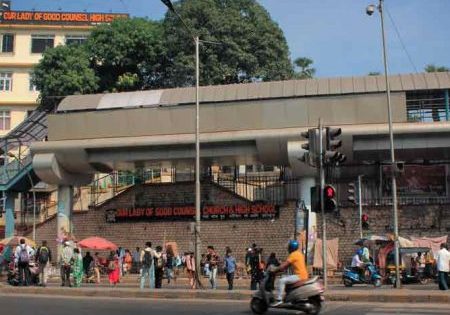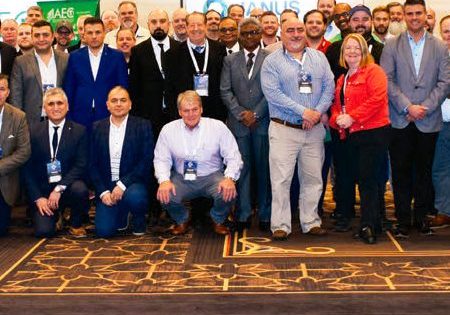Heads of leading OEMs and real estate industry stakeholders share insights.
With all the buzz about quickly advancing technology, ELEVATOR WORLD India realized that some of the country’s leading figures in vertical transportation (VT) and real estate possess unique perspectives that can give us insights into what lies ahead. We have gathered some of their thoughts here.
Pravin Rao, Director, Mitsubishi Elevator India Pvt. Ltd.
Your author (SSP) had a brief Q&A session with the Mitsubishi executive (PR). Following are highlights of their exchange.
SSP: How does the government’s connectivity booster development thrust — that is, the push to build infrastructure designed to promote transportation — imply increased scope for VT, as elevators and escalators will be a given in airports, metro and railway projects?
PR: The scope of VT is always there in infrastructure projects. VT acts as a backbone that helps in the flow of people, effective usage of floor space, etc. The main concern regarding VT would be the safety of the passenger and quality of the product. Nowadays, VT purchase decisions cannot be made based just on the lowest price, a practice known as L-1 theory. Different factors, like safety, quality and reliability, are taken into account.
SSP: What are your overall expectations for the VT industry?
PR: We forecast a total market demand of elevators and escalators in 2020 of 65,000 units, and 5% growth is expected from year 2021 onward.
SSP: Any new developments in Mitsubishi Elevator India Pvt. Ltd.?
PR: In April 2019, we launched the NEXIEZ-LITE machine-room-less (MRL) elevator, an Indian-produced model that does not require a machine room, for mid- and low-rise residences, office buildings and hotels in India. Now, both machine-room and MRL options are available from Mitsubishi’s domestic-made product.
Considering common and emerging requirements, like replacement of aged elevators, we keep developing new features to cater to such markets.
Junichi Kyushima, Managing Director, Toshiba Johnson Elevators (India) (TJEI)
Excerpted from The Toshiba Newsletter 2.0:
“India’s tremendous infrastructure growth is being propelled by construction, from undulating business hubs to marvelous residential complexes. As India’s skyline touches newer heights, faster, stronger and more-reliable elevator systems are becoming a prerequisite for the real estate sector. Although India is the world’s second-largest elevator market, it is still in the nascent stages, with average annual sales volume of just upwards of 50,000 units. This untapped potential renders India as the fastest-growing elevator market in the world. By 2020-2021, the Indian market is expected to grow 35-40%, crossing the 70,000 elevators per annum mark. But the growing market is also throwing up new challenges, such as an emphasis on energy-efficient products and gearless elevators. With tall buildings being the current trend, providing faster elevators is essential. The need for innovative and eco-efficient products is also increasing, with the ‘Green Building’ concept gaining significant ground in India.
“Comprehending the evolving preferences of Indian consumers, Toshiba, through its [joint venture] TJEI, is introducing elevators that are more connected and more efficient. . . . TJEI conducts a rigorous ‘Seven-Step Quality Check’ for installation and adjustment at every project site, earning it a zero-accident record in India. . . . Rigorous skills training is undertaken by the Japanese engineers for the Indian engineers. TJEI has expanded its product portfolio to cover all spectrums of the market — from the premium to the upper-middle elevator market. TJEI is focusing on two segments: the premium and luxury segment, where TJEI is already an established brand, and the mid-rise building segment, including offices, commercial spaces and residential condominiums. This is where TJEI will further consolidate its market position in the upper-middle segment with products ‘Made for India.’
“. . .We will augment our focus on ‘Made-for-India’ products and consolidate our presence in India by setting up a multipurpose facility in Chennai that will act as [a] training center, distribution center and reliability center, among other roles. With a commitment to providing safe and efficient VT through our. . . global product range, TJEI turns on the promise of a new day.”
Manish Mehan CEO & MD, thyssenkrupp Elevator (India)
“The Indian VT industry’s future looks promising, with hopes for good market growth fueled by positive developments on the government policy front. Noteworthy of these are the infrastructure status awarded to affordable housing [a government designation that offers tax benefits, access to funding, etc.], the drive on urbanization and the ‘smart city’ concept.
“The additions of affordable housing’s infrastructure status, increased carpet area, redefined income definitions to boost supply in the market plus the extension of the 100% tax holiday under section 80-IBA of the Income Tax Act, 1961 to March 31, 2020, will give a strong impetus to the VT industry.
“The real estate sector in India is expected to reach a market size of US$1 trillion by 2030, from US$120 billion in 2017, and contribute 13% of the country’s gross domestic product by 2025. Retail, hospitality and commercial real estate are growing significantly, providing the much-needed infrastructure for India’s growing needs. The big areas of growth in real estate in 2020 and beyond could come from low-cost housing, smart cities and commercial real estate. There have been some positive developments in low-cost housing. Maharashtra has launched nearly 104,000 units with an investment of INR156 million (US$2.2 million), while Gujarat and the National Capital Region will put up another 70,000 units with a similar investment.
“Under the Smart Cities program, a total of 100 cities will see the program positively impacting the lives of nearly 100 million dwellers with high-quality core infrastructure and a more sustainable quality of life.
“The past two years have seen strong growth in commercial leasing activity in such cities as Bengaluru, Chennai, Mumbai and Pune, with about 40 billion ft2 of space absorbed. All these factors will contribute to the growth of the VT industry, too.
“India is planning to start 100 additional airports by 2024. Along with this, the proposal includes the 1,000 new routes that will connect with smaller towns and villages. To build airports over the next five years, the Government of India has committed investments of INR1 trillion (US$14 billion), which will boost the growth of the Indian VT industry.
“As congestion in urban transport networks rises in tandem with population increases in cities, city governments are under continual pressure to reduce road traffic congestion and combat the costs it imposes, in terms of immense waste of time, energy and environmental resources. thyssenkrupp’s ACCEL moving walk has been developed to address this need in the current multimodal transportation network of large cities.
“ACCEL is a system for accelerated speed between destinations, such as terminals and stations, promising on-time access to public transportation, practically from the commuter’s doorstep. These systems allow commuters to leave their cars at home, saving time, resources and stress.
“The system is unique: passengers enter walking at a regular speed but are accelerated at higher speeds to the other end. Applying linear motor technology from the Transrapid magnetic levitation (maglev) trains, the ACCEL transportation system will facilitate fast access to metro stations, making it possible to have a station entrance at less than 600 m from any commuter, attracting up to 30% additional passengers. In airport terminals, ACCEL can cut current transit times between gates.
“The ACCEL transportation system facilitates the building of passenger feeders to existing metro stations, making them easily accessible, even to commuters who do not usually use the metro due to its distance from their locations. Metro system capacities can now be maximized with new access points, and implementing ACCEL as an alternative to building expensive additional stations or carving complex underground connections can result in a significant decrease in the number of road transportation vehicles in use.
“ACCEL also benefits airport operators looking to improve transit times between gates or between distant parking bays and the airport. With no waiting times or barrier gates, passengers need only 140 s to cover a distance of 270 m, instead of the earlier 415 s, resulting in time savings of 66%. It eliminates the need and high costs associated with providing buses, automated people movers, or sky-trains for distances up to 1.5 km.
“ACCEL can transport as many passengers as typical fully automated cabin systems — up to 7,300 passengers/h in each direction — and combines smooth speed changes and the highest safety requirements for passenger transportation. Using a band of overlapping pallets, each of which expands to three times its original size, ACCEL’s revolutionary linear motor maglev technology ensures that passengers step onto the belt at normal walking speeds of 0.65 m/s (2.35 km/h), accelerate smoothly up to 2 m/s (7.2 km/h), then decelerate back to normal walking speeds before leaving the system. For passengers who continue walking while on the belt, speeds of up to 3.3 m/s (12 km/h) can be achieved.”
Interior Design Tech Talk
Abhineet Seth, Founder and CEO, Abodekraftz
“Be it an apartment high rise in Mumbai, Gurgaon or Noida, a low rise in Delhi or independent bungalows, the Internet of Things (IoT) in elevators is soon going to be a sim-card-in-mobile-phone kind of feature. You’ve so far seen actor Amitabh Bachchan using his mobile phone to switch on his air-conditioner and geyser on television during the advertisements. Now imagine this: You’ve invited guests to your home, and they are scheduled to arrive at 8 p.m. You send them a one-time password and QR code that allow them to enter the apartment complex without being hassled by security guards, follow an automated building map system that guides them to a designated parking spot, walk to an elevator and, using the QR scan, ride straight to your — and only your — floor. Welcome to the next level of IoT in the real estate building management system (BMS).
“Premium hotels have been using limited floor access through card scans for a while now. This will soon be replaced by QR scans or may simply be profile scans. The elevator, equipped with full scanners, will automatically take passengers to the floors that host their suites. Some elevators may use a simple voice instruction to take the rider to the authorized floor.
“BMSes are going to be the first and fastest gainers of IoT in real estate infrastructure, and elevators form a very critical focus area — not only in terms of access control, but also in ensuring safety standards, timely fault recognition and even automatic summoning of maintenance teams for timely attention.”
Realty Perspectives by Developers
Ashok Gupta, Chief Managing Director, Ajnara India Limited
“The government and authorities have been very active on the infrastructural front. It has been widely accepted that infrastructure and connectivity play a major role in the upliftment of any region. The more you bring regions close to each other, the better demand distribution is observed. Demand of ancillaries like elevators, lights, cement, etc. also increases in the region.”
Deepak Kapoor, Director, Gulshan Homz
“The current infrastructure development has been designed keeping in mind the transit-oriented development model, and one can say that the work is on making cities more smartly developed. The current government has been very keenly working on infrastructural developments during its tenure, and the speed at which this project has been completed is very remarkable. This will not only ensure renewed interests in the regions, but also open further avenues of developments.”
Vikas Bhasin, Chief Managing Director, Saya Homes
“Connectivity is the sole factor that determines the success of the real estate sector. The Government of India has been very active on the infrastructure front, which includes elevated roads that not only give joy to daily commuters in the region, but also to homebuyers. The demand in the real estate sector principally depends upon accessible infrastructure facilities. Good infrastructure holds the ease of convenience in respect to the indispensable utility services, along with access to schools, shopping, healthcare facilities, entertainment, etc.”
Get more of Elevator World. Sign up for our free e-newsletter.









